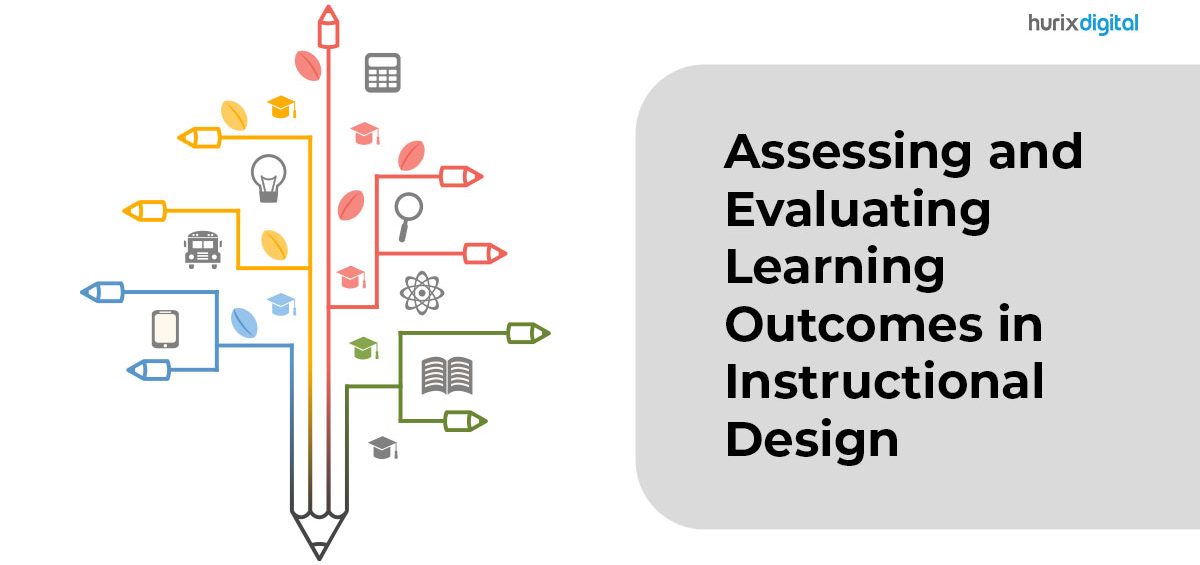Summary
This article provides a brief overview of the importance of assessing and evaluating learning outcomes in instructional design.
A learning outcome is a description of what students will learn through a course and how the learning will be assessed and evaluated. Well-defined learning outcomes can make instructional design, student assessment, and learning activities more simple and effective.
They play a key role in designing courses because they give the instructor and students a basis for measuring learning effectiveness.
Table of Contents:
- Why Assess and Evaluate Learning Outcomes?
- What Does it Involve?
- What are the Types of Assessment?
- Planning Assessment in Instructional Design
- Elements of a Learning Outcomes Assessment Plan
- Indicators that Your Instruction Needs Improvement
- Summing Up
Why Assess and Evaluate Learning Outcomes?
Assessment and evaluation enable you to confirm that the instruction is designed to achieve the planned learning outcomes. It helps determine:
- Whether instructional goals are in line with the program requirements
- Whether lesson plans, learning materials, and assessments are integrated with specific learning needs
- Whether any changes need to be made to the instruction to make it more effective
- Whether the execution of the learning design provides satisfactory instruction, helps achieve the instructional objectives, and helps learners obtain the requisite skills and knowledge
- Whether it equips learners to transfer their learning into applied skills and relevant contexts
Outcome-based assessment is a key component of evaluating programs, which focuses on student learning outcomes and the impact of learning. Learning outcomes assessment can help you understand a course’s strengths and possible drawbacks and determine areas of improvement.
Also Read: Gamified Assessments: Evaluating Learning Outcomes with Educational Video Games
What Does it Involve?
Evaluation and assessment methods should enable the instructor to gauge whether the desired learning has taken place and whether the course needs to be modified to improve learning.
Student learning can be assessed through direct and indirect measures. Direct measures include homework, quizzes, exams, reports, essays, and more. Indirect measures include surveys, course enrolment data, and placement rates.
Kirkpatrick’s evaluation model sets forward four levels of evaluation. These are reaction, learning, behavior, and results. This model provides a helpful framework for understanding evaluation.
- Level 1: Reaction measures how participants respond to the instruction – are they satisfied?
- Level 2: Learning measures whether the participants properly understood the instruction, leading to an increase in knowledge, skills, and experience
- Level 3: Behaviour measures whether the participants are using what they learned, resulting in changed behavior
- Level 4: Results measure whether the material has a positive impact
What are the Types of Assessment?
There are two main types of assessment. These are as follows:
1. Summative Assessment
This includes tests, quizzes, and other graded assessments that measure student performance. This performance evaluation is usually done at the end of the course or module and displays what the participants have learned.
2. Formative Assessment
This usually takes place on an ongoing basis through the learning process. Students receive inputs, guidance, and feedback on their performance that can enable them to improve.
This can be done face-to-face or through comments on assignments, rubrics, emails, and other ways of giving feedback.
Also Read: What is Formative Assessment? Examples and Types of Formative Assessment
Planning Assessment In Instructional Design
Assessment is more successful if it is defined in a plan – whether you are assessing course learning or the whole curriculum. Here are some of the key steps in coming up with an assessment plan.
1. Define Learning Outcomes
The first step in devising assessment strategies is to set out the learning objectives.
2. Determine Methods of Assessment
As an instructor, you need to decide how you will determine that students are meeting the learning outcomes through assignments or other forms of assessment.
3. Create Assessments
Create formats and performance criteria for assessments.
4. Connect Assessments with Other Components of the Course
The main forms of assessment can be integrated with smaller assignments and ongoing learning such as lectures, discussions, and other activities.
5. Analyze the Results
This involves reading and scoring assignments and comparing them to set performance objectives.
6. Take Stock and Revise
After the assessment, instructors can develop learning and assessment plans for the rest of the course based on the areas of strength and improvement identified through the assessment and evaluation.
Elements of a Learning Outcomes Assessment Plan
An effective learning outcomes assessment plan has the following features:
- It aligns the core curriculum with expected learning outcomes for students
- It allows instructors to collect helpful evidence that can be easily assessed and evaluated
- It is manageable in its scope while also flexible enough to meet changing course requirements
- It has a timeline that enables instructors to meet important dates and prioritize key parts of the assessment
Indicators that Your Instruction Needs Improvement
Assessing and evaluating learning outcomes is a great way to gauge whether your instructional design needs improvement. Here are key indicators that it does.
1. Low Completion Rates
If learners are losing interest in the course and failing to complete it, it may indicate that you need to change your instruction. You may need to look at the reasons why they are dropping out of the course.
The content may be cumbersome and inaccessible, or the exercises and assessments may be too challenging, or learners may find it difficult to relate to the course.
2. Low Engagement
Engagement rates can indicate whether your course is effective.
If learners regularly ask questions, are participative, and engage in discussions with fellow learners, it shows they are engaged. If engagement drops during the course, this would also need to be factored in.
3. Negative Feedback
Reviews and feedback are key indicators of the effectiveness of your instruction. Negative reviews can cause concern, particularly if there are several negative reviews.
4. No Change in Behavior
One of the ways of measuring learning effectiveness is to see if it results in a behavior change. You can assess learners’ behavior for changes to see if there is progress in their abilities.
Summing Up
Assessing and evaluating learning outcomes is an integral part of designing courses and curricula. It enables instructors to determine whether the course is achieving the desired learning goals. Defining a plan for assessing outcomes helps ensure that the assessment is effective.
Program evaluation allows educators to make a data-led assessment of the course design. This can be done by considering student and faculty requirements, policies, procedures, and overall learning outcomes.
Hurix Digital offers e-learning services and higher education solutions. Our team applies instructional design models and theories in diverse domains to meet unique client needs. We help educational institutions create and deliver competency-based education. We also design and develop educational content and offer business learning consulting and solutions.











